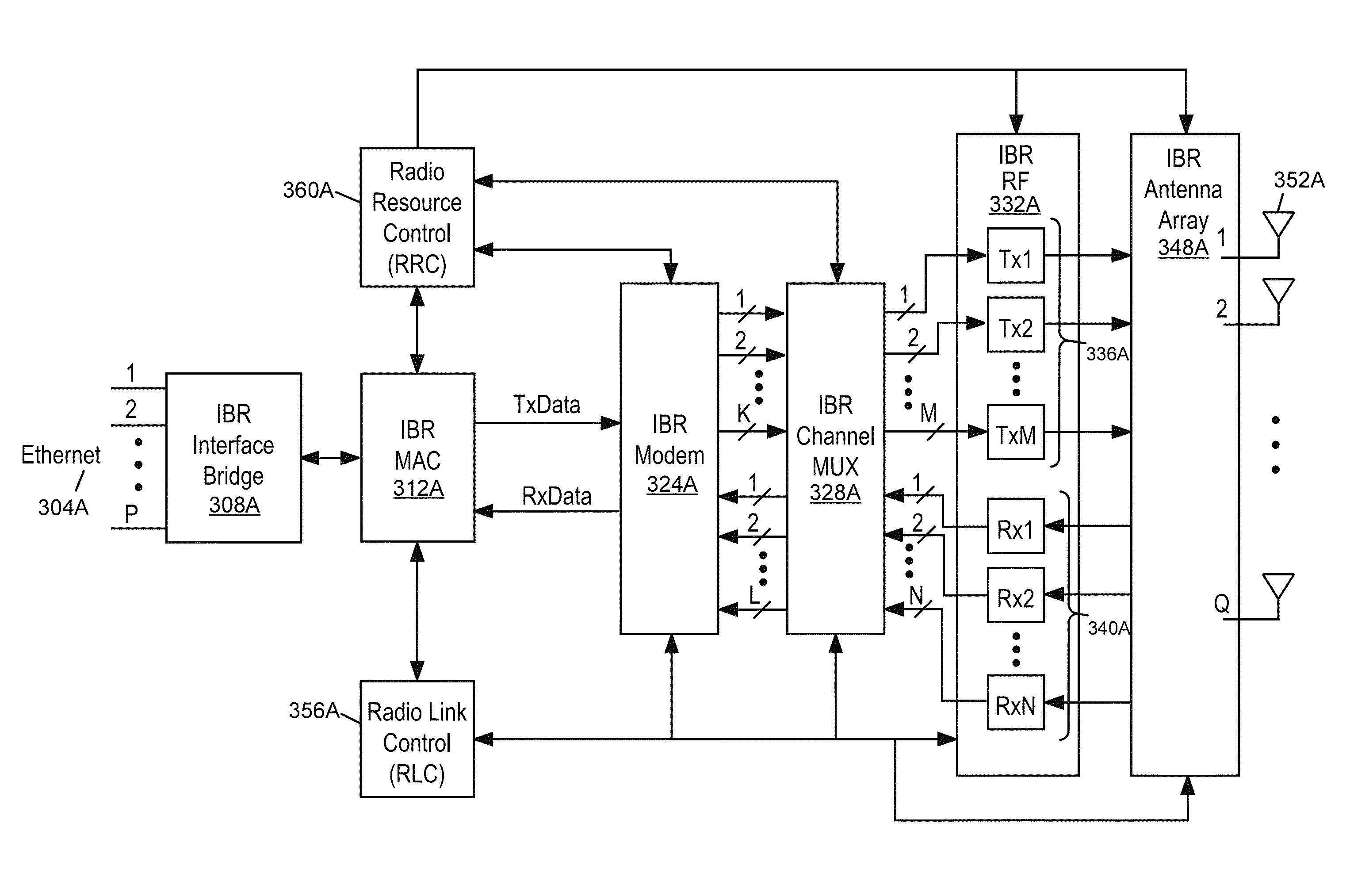Enhancement of the channel propagation matrix order and rank for a wireless channel
a wireless channel and matrix technology, applied in the field of data networking, can solve the problems of inability to connect all high-bandwidth data networking points with optical fiber at all times, access points that are inevitably very high in data bandwidth, and achieve the effect of reducing the level of receive signal and improving the performance of the mimo wireless communication system
- Summary
- Abstract
- Description
- Claims
- Application Information
AI Technical Summary
Benefits of technology
Problems solved by technology
Method used
Image
Examples
Embodiment Construction
[0114]Referring now to FIG. 5A, an embodiment of an IBR including an Embedded Link Processor (ELP) is depicted. A number of the blocks common with FIG. 3B are shown, whose functioning is generally described associated with the foregoing description. Relative to FIG. 3B, FIG. 5A provides for a modified IBR MAC 512A, and an additional block referred to as an Embedded Link Processor (ELP) 500.
[0115]Embodiments of IBR MAC 512A generally incorporate the functionality of the various embodiments of IBR MAC 312A. Some Embodiments of IBR MAC 512A additionally include MAC processing supporting the optimization of the wireless links utilizing ECHO devices. Additionally some embodiments of IBR MAC 512A support peer to peer and communications with other devices (e.g. ECHO devices) utilizing an embedded control channel for the transfer of control information.
[0116]Embodiments of the Embedded Link Processor (ELP) 500 provide for the reception and insertion of an additional wireless communications ...
PUM
 Login to View More
Login to View More Abstract
Description
Claims
Application Information
 Login to View More
Login to View More - R&D
- Intellectual Property
- Life Sciences
- Materials
- Tech Scout
- Unparalleled Data Quality
- Higher Quality Content
- 60% Fewer Hallucinations
Browse by: Latest US Patents, China's latest patents, Technical Efficacy Thesaurus, Application Domain, Technology Topic, Popular Technical Reports.
© 2025 PatSnap. All rights reserved.Legal|Privacy policy|Modern Slavery Act Transparency Statement|Sitemap|About US| Contact US: help@patsnap.com



